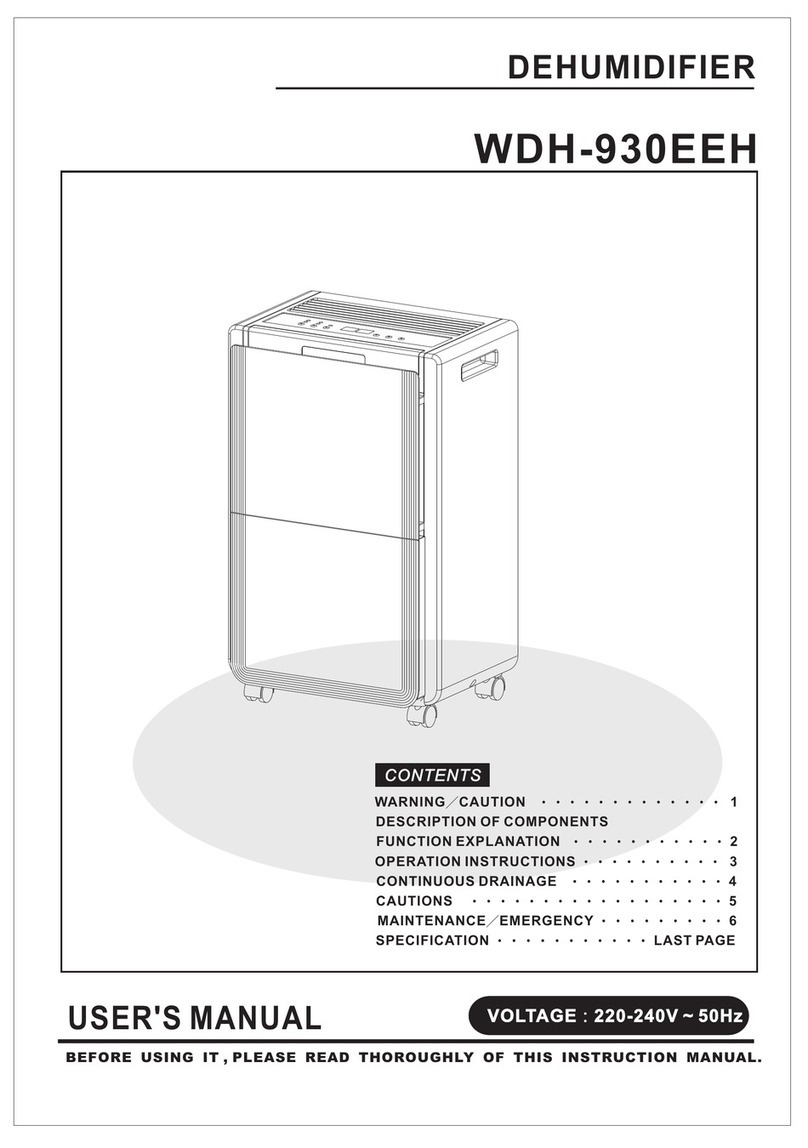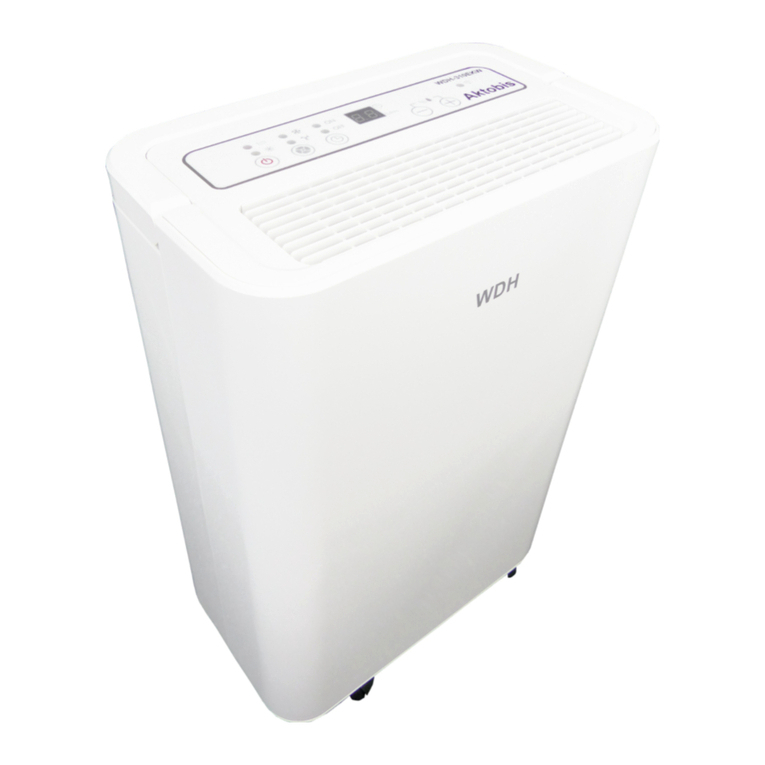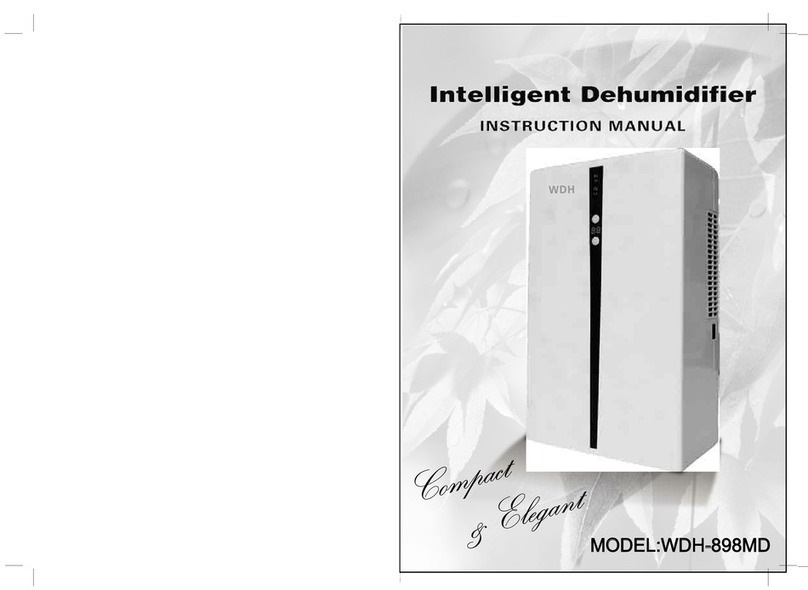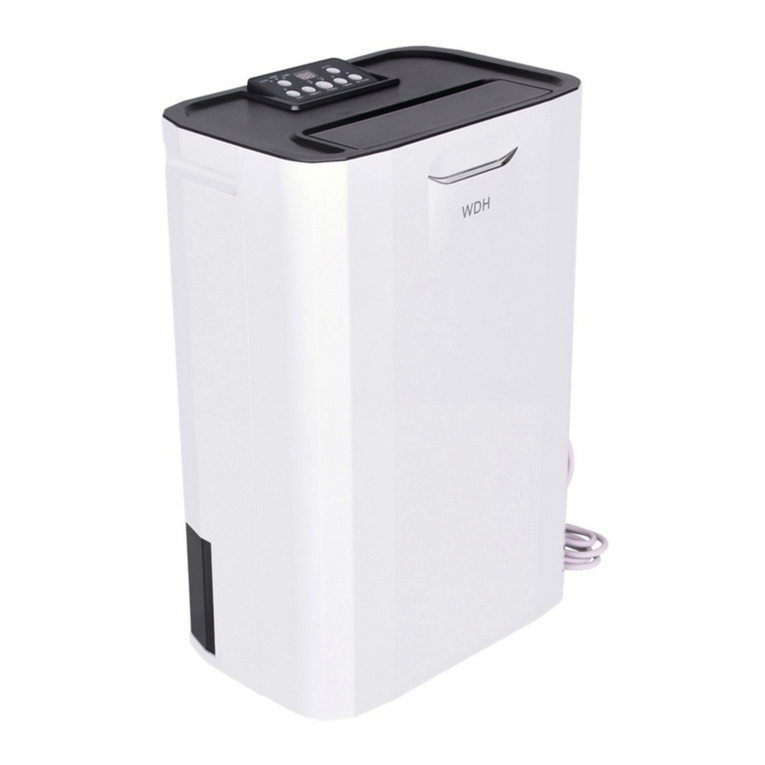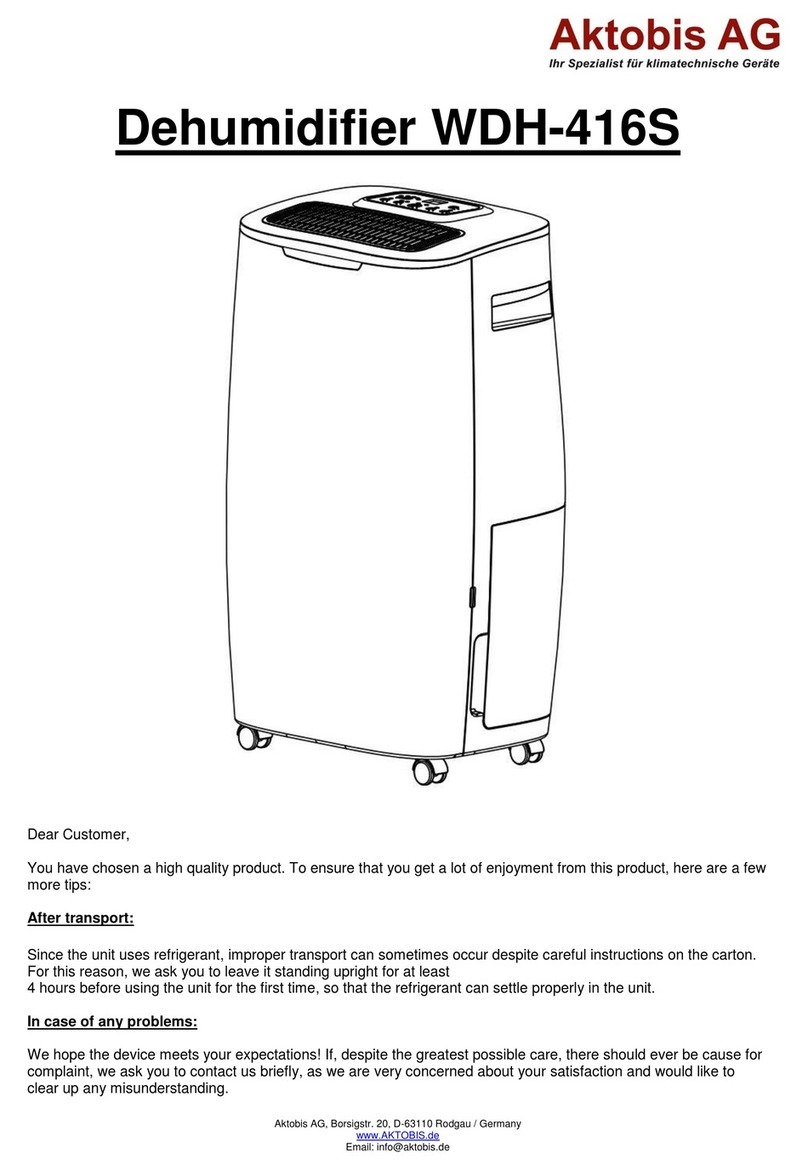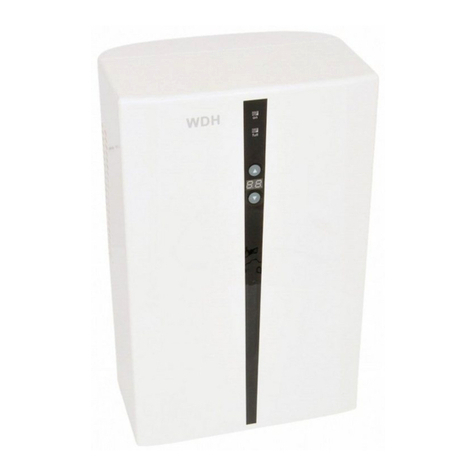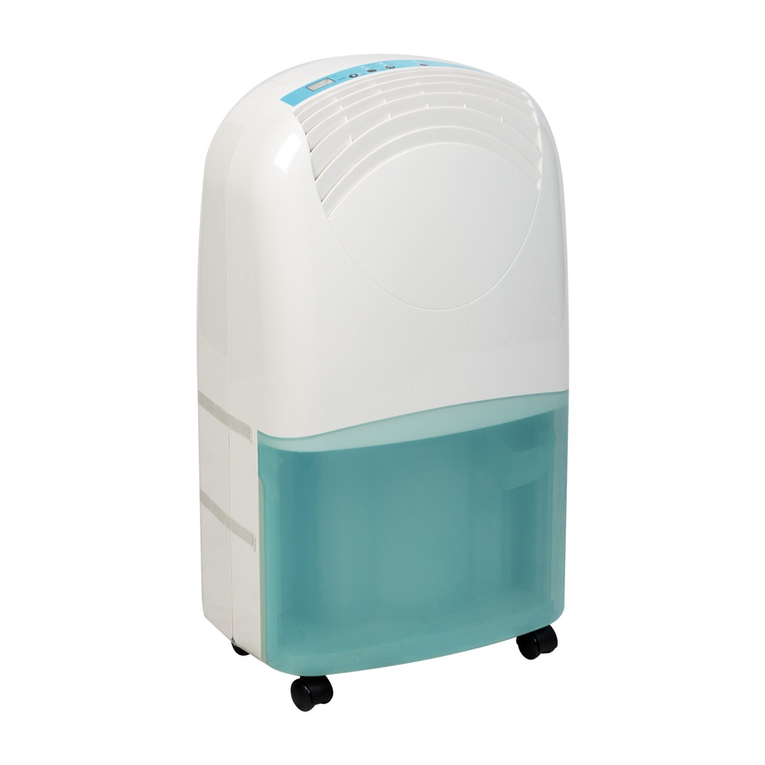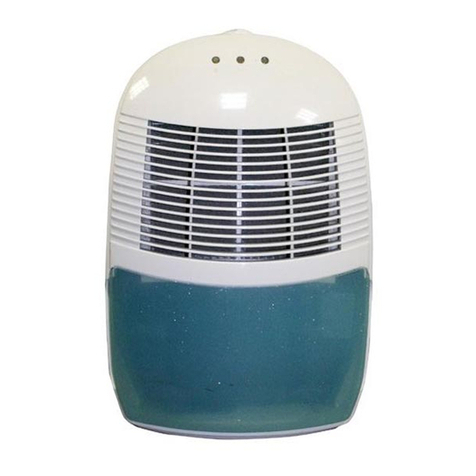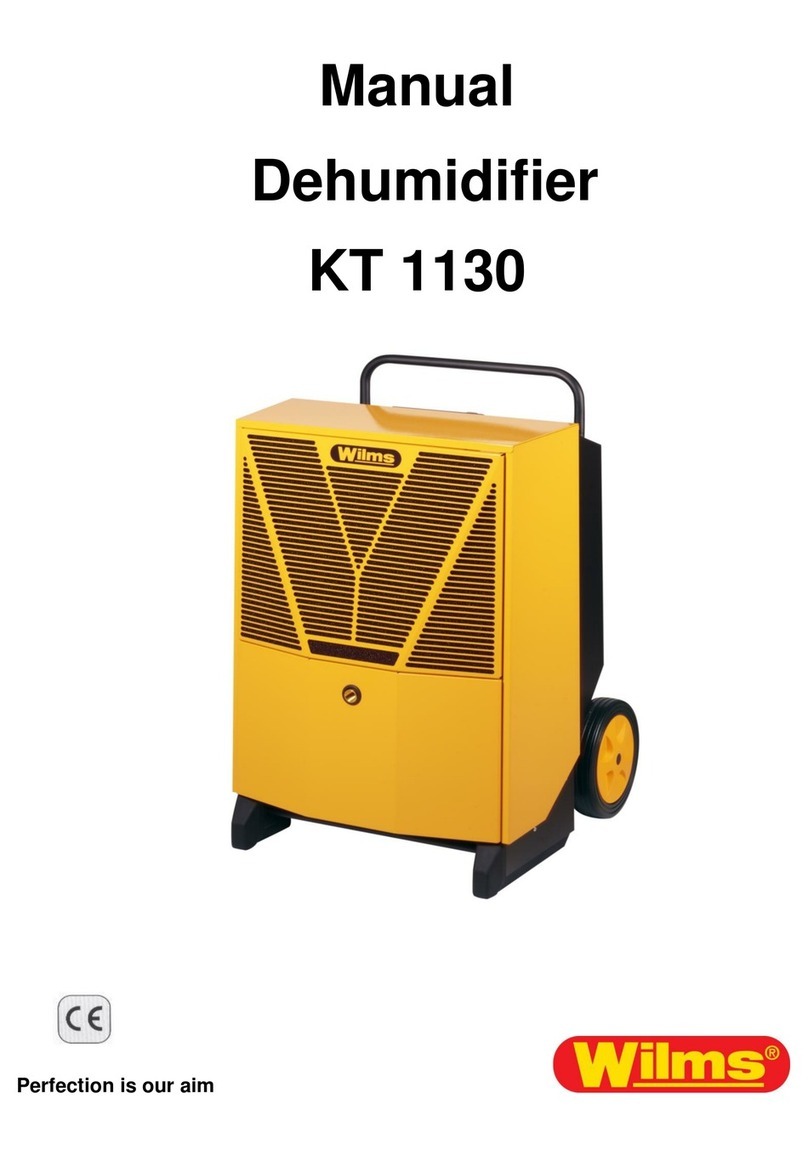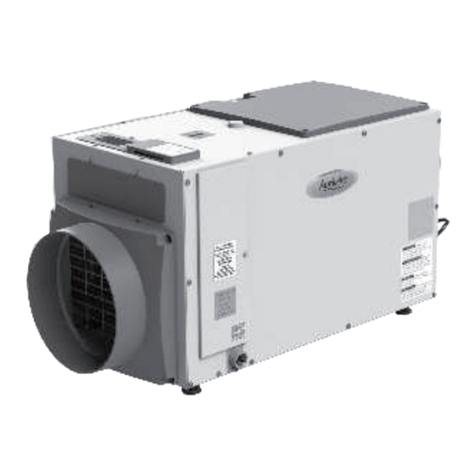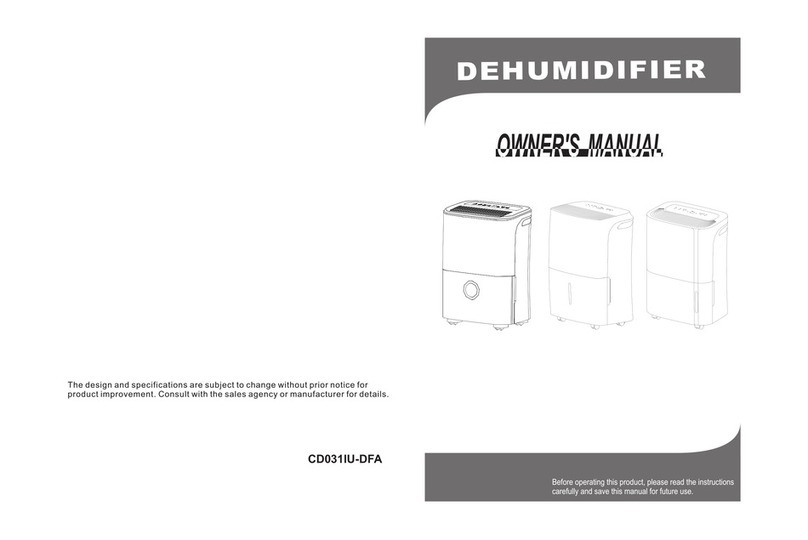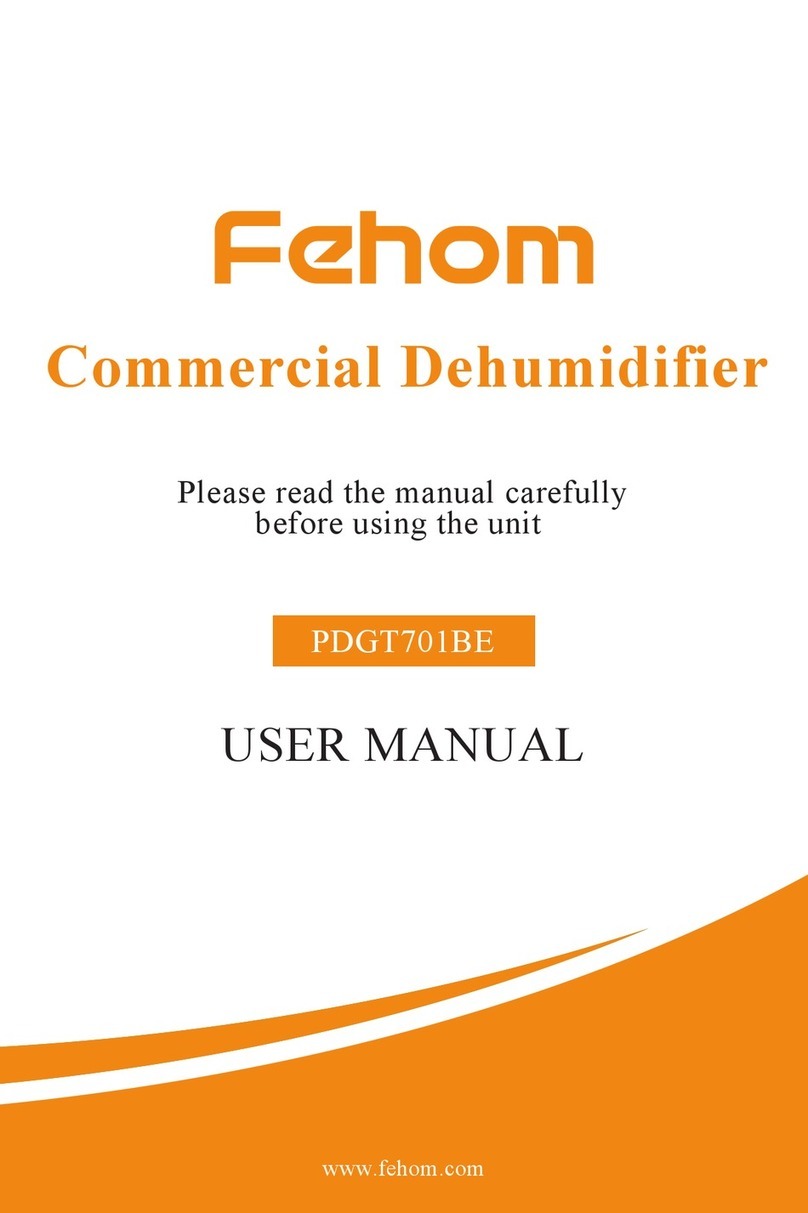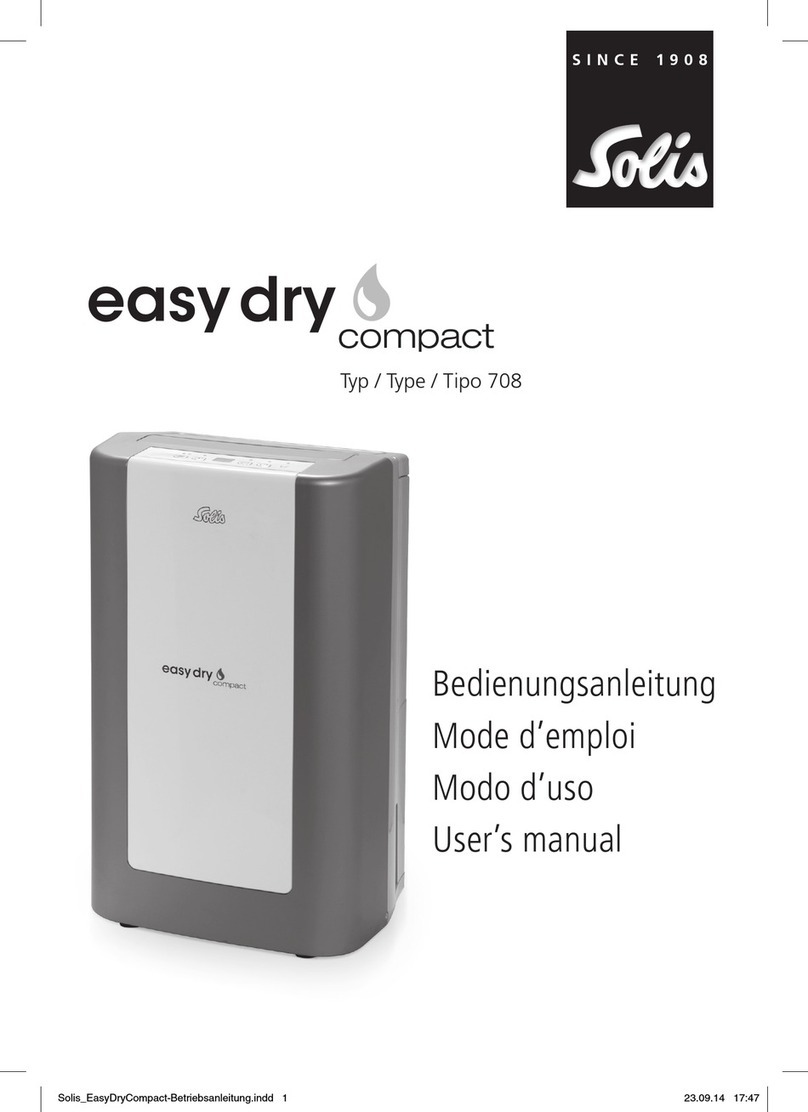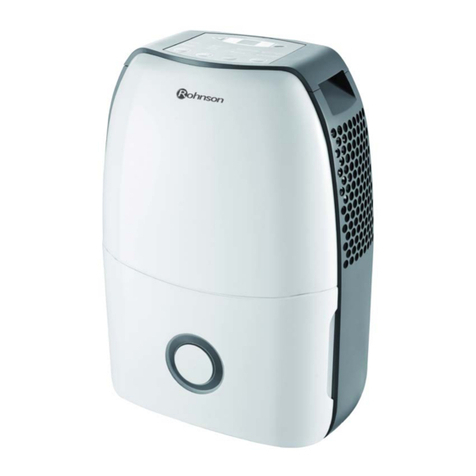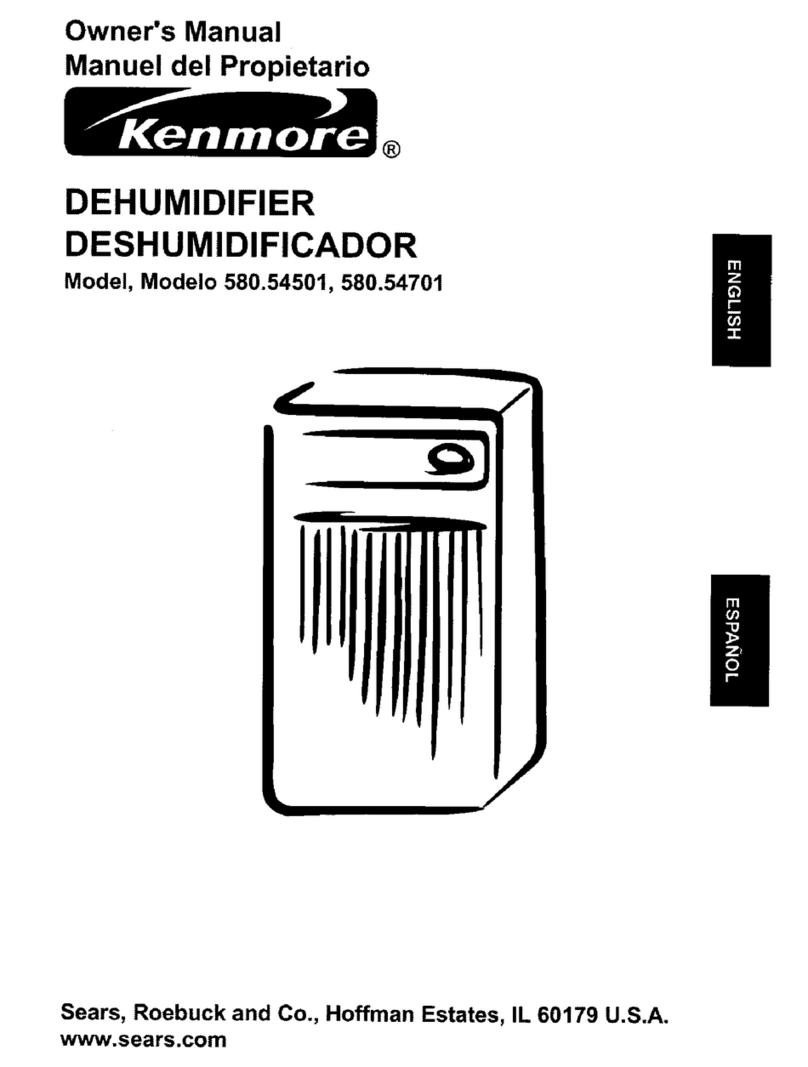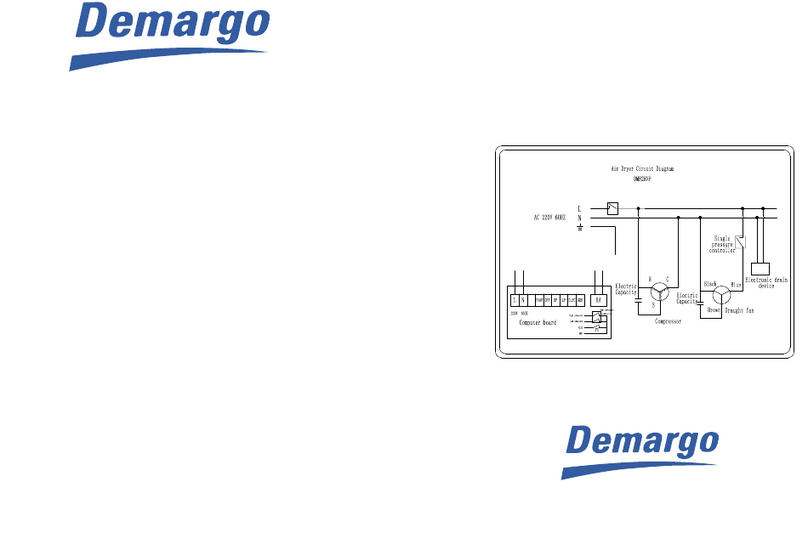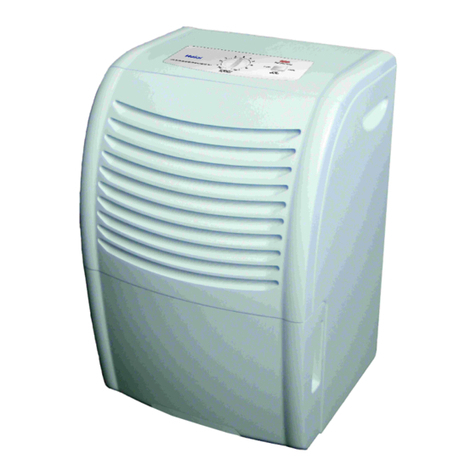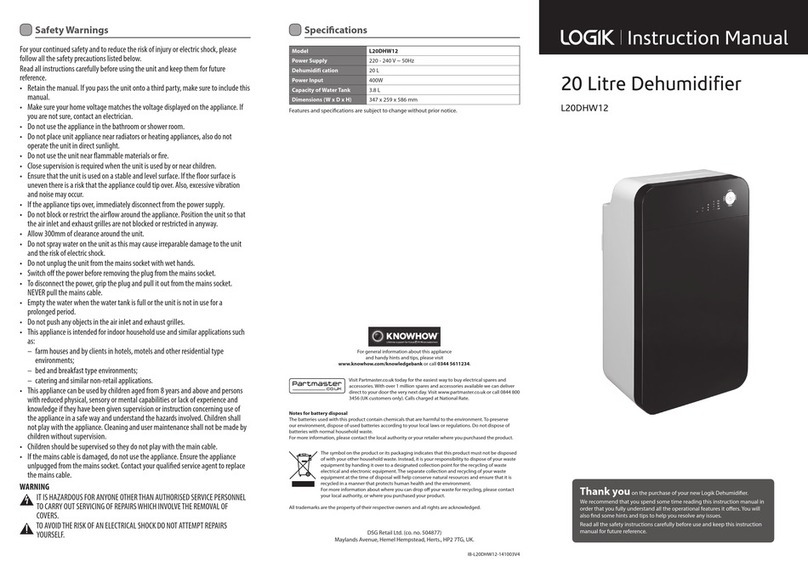
2
WARNING
Only install and operate this appliance as outlined in this instruction manual. At all
times,use care when using this appliance.
Do not modify this appliance in any way to avoid danger.
Electrical equipment and installations regulated by national legislation must be
followed.
Children must not use this appliance unsupervised.
For safety reasons, anyone with paychological, physical or any medical condition
that may impair judgment should only use this appliance when under the supervision
of a responsible adult.
For safety sake, never use a damaged power cable; always refer to the
manufacturer or an authorized technical service centre if appliance requires repair
It is essential that the appliance is connected to an efficient earth system checked
by a qualified electrician.
The use of extension cables is not recommended.
Do not place the air conditioner near any heating appliance.
The appliance should be transported upright or on its side, Any internal circuit water
should be emptied before moving. Do not turn on the appliance for at least one hour
before starting it.
Flammable substances or pressurised containers (eg aerosol cans ) should be kept
a minimum of 50cms away.
The appliance should not be installed in rooms containing sulphur,gas or oil.
Do not disconnect the appliance by pulling on the power cable; always disconnect
the appliance before any cleaning or maintenance is undertaken.
Do not store anything on top of the appliance, especially heavy or hot objects.
Repairs must only be undertaken by authorised service centres of the manufacturer.
Failure to comply may be dangerous.
Do not store the appliance covered with plastic bags.
Remember the environment when disposing of packaging around the appliance and
when the appliance has reached its used by date.
A warning that the appliance shall be stored in a well-ventilated area where the
room size corresponds to the room area as specified for operation.
A warning to keep ventilation openings clear of obstruction.
This appliance can be used by children aged from 8 years and above and persons
with reduced physical, sensory or mental capabilities or lack of experience and
knowledge if they have been given supervisionor instruction concerning use of the
appliance in a safe way and understand the hazards involved.
Children shall not play with the appliance.
Cleaning and user maintenance shall not be made by children without supervision.
This appliance is for indoor use only.(The appliance cannot be used in laundry room.)
WARNING
Only install and operate this appliance as outlined in this instruction manual. At all
times,use care when using this appliance.
Do not modify this appliance in any way to avoid danger.
Electrical equipment and installations regulated by national legislation must be
followed.
Children must not use this appliance unsupervised.
For safety reasons, anyone with paychological, physical or any medical condition
that may impair judgment should only use this appliance when under the supervision
of a responsible adult.
For safety sake, never use a damaged power cable; always refer to the
manufacturer or an authorized technical service centre if appliance requires repair
It is essential that the appliance is connected to an efficient earth system checked
by a qualified electrician.
The use of extension cables is not recommended.
Do not place the air conditioner near any heating appliance.
The appliance should be transported upright or on its side, Any internal circuit water
should be emptied before moving. Do not turn on the appliance for at least one hour
before starting it.
Flammable substances or pressurised containers (eg aerosol cans ) should be kept
a minimum of 50cms away.
The appliance should not be installed in rooms containing sulphur,gas or oil.
Do not disconnect the appliance by pulling on the power cable; always disconnect
the appliance before any cleaning or maintenance is undertaken.
Do not store anything on top of the appliance, especially heavy or hot objects.
Repairs must only be undertaken by authorised service centres of the manufacturer.
Failure to comply may be dangerous.
Do not store the appliance covered with plastic bags.
Remember the environment when disposing of packaging around the appliance and
when the appliance has reached its used by date.
A warning that the appliance shall be stored in a well-ventilated area where the
room size corresponds to the room area as specified for operation.
A warning to keep ventilation openings clear of obstruction.
This appliance can be used by children aged from 8 years and above and persons
with reduced physical, sensory or mental capabilities or lack of experience and
knowledge if they have been given supervisionor instruction concerning use of the
appliance in a safe way and understand the hazards involved.
Children shall not play with the appliance.
Cleaning and user maintenance shall not be made by children without supervision.
This appliance is for indoor use only.(The appliance cannot be used in laundry room.)
